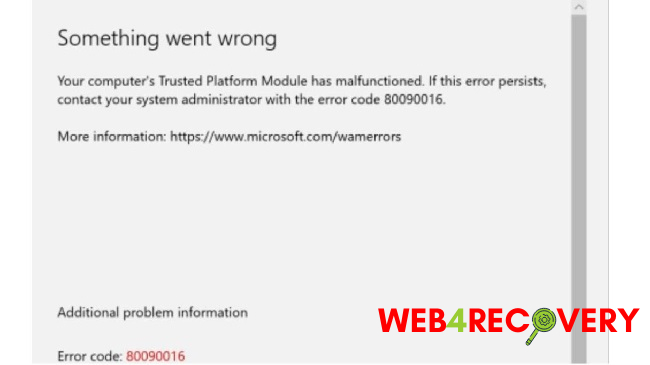Trusted Platform Module (TPM) plays a pivotal role in enhancing your computer’s security by storing cryptographic keys. However, if you’ve received the ‘your computer’s Trusted Platform Module has malfunctioned’ message on your Windows 10 or Windows 11 system, it can seem alarming.
Whether this issue arises after a motherboard replacement, with OneDrive, or in relation to encryption failure, it is essential to understand what might cause these malfunctions and how to troubleshoot them, especially for users of popular brands like Dell.
This detailed article walks you through what TPM is, why it might malfunction, and the solutions to rectify these malfunctions.

Understanding the Trusted Platform Module (TPM)
The TPM is a microchip designed to secure hardware by integrating cryptographic keys into devices.
It offers a range of security benefits, including disk encryption, platform integrity, and secure boot, making it a critical component for modern Windows operating systems, particularly since the launch of Windows 11, which mandates TPM 2.0.
Why Would TPM Malfunction?
Several scenarios could trigger a TPM malfunction:
- Hardware Issues: TPM is a physical chip on your computer’s motherboard. Any damage to the motherboard, such as during replacement or due to wear and tear, could cause the TPM to malfunction.
- Incompatible Firmware Updates: A firmware update that is incompatible with your specific TPM could cause malfunctions.
- Software Glitches: Occasionally, glitches in software like OneDrive, which relies on TPM for security, could trigger malfunction messages.
- Improper Encryption Process: If the TPM encryption process encounters an error, it could result in a malfunction.
Solutions for TPM Malfunctions
If you’re faced with a TPM malfunction, here are some solutions you could consider:
1. Update Your TPM Driver: To do this, open ‘Device Manager,’ locate ‘Security devices,’ right-click on ‘Trusted Platform Module,’ and select ‘Update driver.’ Windows will search for and install any available updates.
2. Clear the TPM: You can clear the TPM through the Windows ‘Security’ settings, under ‘Device Security > Security processor > Security processor details.’ Remember, clearing the TPM will erase information stored within the TPM, including encryption keys.
3. Check Your Motherboard: If the TPM malfunction began after a motherboard replacement, check that the motherboard is compatible with your TPM and that the TPM chip wasn’t damaged during installation.
4. Troubleshoot OneDrive: If the error appears linked to OneDrive, consider reinstalling the OneDrive software or updating it to the latest version.
5. Consult a Professional: If the TPM malfunction persists, you might need professional help. Reach out to your device manufacturer or a trusted technician.
Specific Case: TPM Malfunctions on Dell Computers
For Dell computers, you might need to update the BIOS or enable the TPM in the BIOS settings. For BIOS updates, visit the Dell support website and download the latest BIOS update for your specific model. To enable the TPM:
- Restart your computer and press F2 during startup to access the BIOS.
- Navigate to ‘Security > TPM 2.0 Security.’
- Ensure the ‘TPM Security’ and ‘TPM Activation’ are checked.
In conclusion:
While a TPM malfunction can seem worrisome, understanding its cause and applying the appropriate solution can help resolve the issue.
Whether you’re updating your TPM driver, clearing the TPM, or consulting a professional, there are multiple ways to ensure your TPM—and by extension, your computer—remains secure and functional.

















